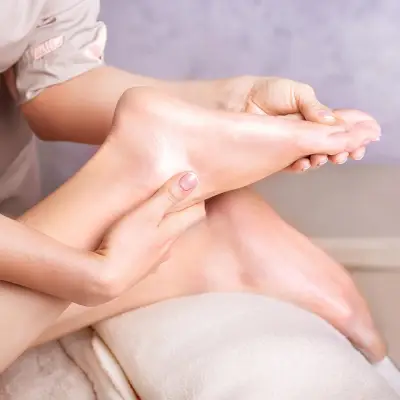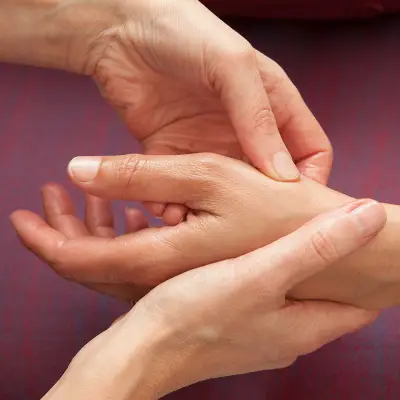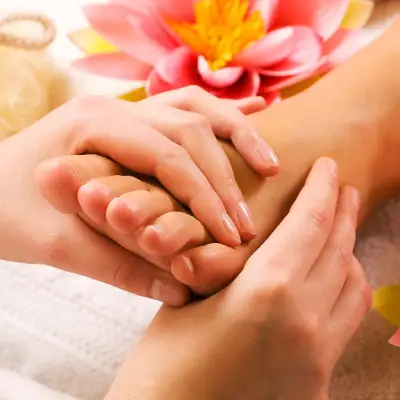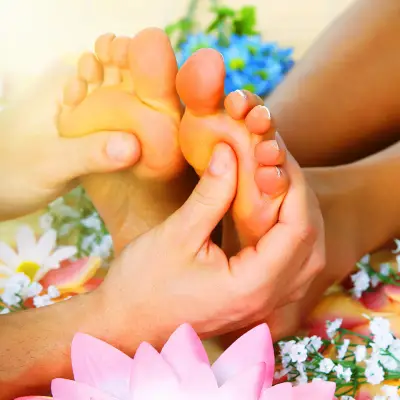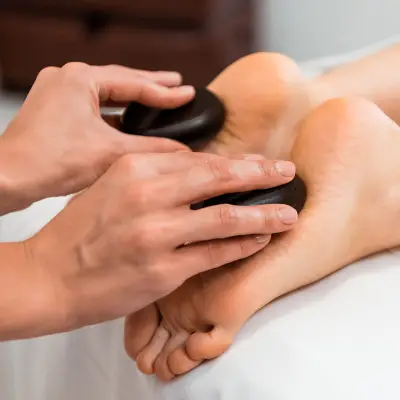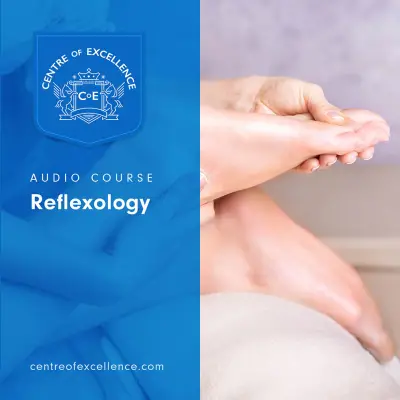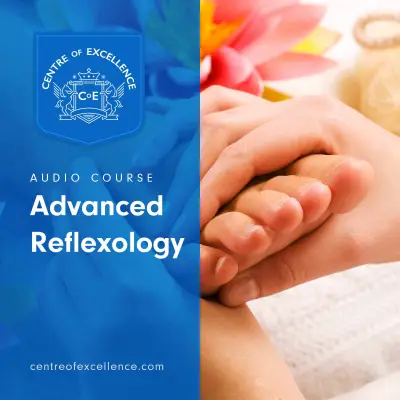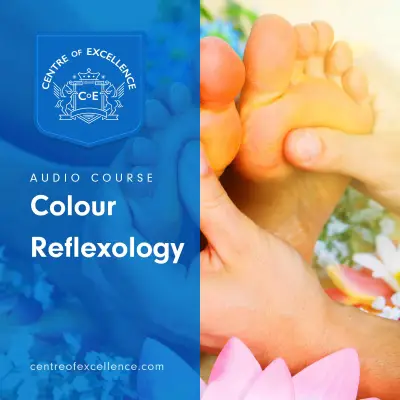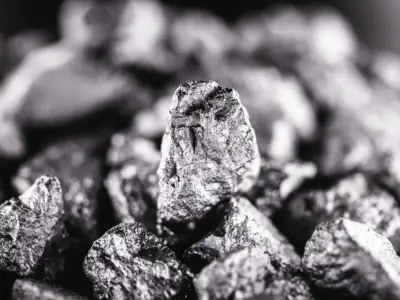What is a reflexology massage exactly, and how does it differ from other types of massage? In this article, we'll explore everything you need to know about reflexology massage, its benefits, and what to expect if you decide this holistic treatment is for you.
Understanding Reflexology
Reflexology is a type of massage that involves applying pressure to specific points on the body. These points, known as reflex points, are believed to correspond to different organs and systems in the body.
Although foot reflexology might be the most popular form of this massage, it is possible to receive reflexology on the hands and face.
The theory behind reflexology is that applying pressure to these reflex points can stimulate the corresponding organs and systems, promoting a gentle yet effective form of balance and healing.
Reflexology is based on the principle that the body is divided into zones, each corresponding to a specific body part. For example, the toes are believed to correspond to the head, while the heels are believed to correspond to the pelvic area.
During a reflexology session, the therapist will use their hands to apply pressure to these reflex points, using techniques such as kneading, rubbing, and squeezing. The pressure applied can range from gentle to firm, depending on your needs and preferences.
Many people find reflexology to be a deeply relaxing and therapeutic experience. It is often used to help alleviate stress and tension and promote overall health and well-being.
Recommended for you!
Best SellersOrigins of Reflexology
Reflexology dates back thousands of years and has roots in ancient China, Egypt, and India.
In China, reflexology massage is known as "zhi ya" and is still used today to treat various ailments. The ancient Egyptians also practised a form of reflexology massage, which they believed could cure various illnesses.
In India, reflexology massage was part of the Ayurvedic tradition and was used to balance the body's energy. Massaging the feet was thought to promote overall wellness and help the body detoxify when used in conjunction with soothing and balancing oils.
In the early 20th century, Dr. William H. Fitzgerald, an ear, nose, and throat specialist, introduced reflexology massage to the Western world. He believed the body could be divided into ten zones, each corresponding to specific body areas. He believed he could relieve pain and treat various ailments by applying pressure to specific points in these zones.
Eunice Ingham, a physical therapist, further developed the practice of reflexology massage in the 1930s. She mapped out the reflex points on the feet and hands and developed a system of applying pressure to these points to relieve pain and promote healing. She travelled all over the USA, sharing her work and promoting the benefits of zone therapy.
Today, reflexology massage is a popular alternative therapy used to promote health and well-being. Many people find it a relaxing and beneficial way to de-stress and find inner calm.
The Different Types of Reflexology
Most people associate reflexology with the feet, but it is equally effective when applied to different body parts. There are various types of reflexology, each with its unique benefits and techniques:
Foot Reflexology
Foot reflexology is the most common type of reflexology. It involves applying pressure to specific points on the feet that correspond to different organs and systems in the body. By stimulating these points, foot reflexology can help to improve circulation, reduce stress, and promote relaxation.
During a foot reflexology session, the therapist will apply pressure to different areas of the feet using their hands, fingers, or even a special reflexology tool. This type of reflexology is a great choice for those who spend a lot of time on their feet, as the treatment is very relaxing.
Hand Reflexology
Hand reflexology is similar to foot reflexology but focuses on the hands instead of the feet. Like foot reflexology, hand reflexology involves applying pressure to specific points on the hands that correspond to different organs and systems in the body.
Hand reflexology can be especially beneficial for people who spend a lot of time using their hands, such as musicians or computer users. It can help to reduce pain and tension in the hands and wrists and promote relaxation throughout the body.
Face Reflexology
Face reflexology is a less common type involving applying pressure to specific points on the face. Like foot and hand reflexology, face reflexology can help to stimulate the body's natural healing processes and promote relaxation.
This reflexology is very relaxing and a good choice for those who enjoy head and face massages. Sometimes, face reflexology is combined with other techniques, such as Indian head massage, to promote a deep sense of relaxation.
Benefits of Reflexology Massage
Reflexology massage is a natural and non-invasive therapy used for centuries to promote relaxation, relieve stress, and improve overall health and well-being. Here are some of the self-reported benefits:
Physical Health Benefits
Reflexology massage can help to:
- Improve circulation: By stimulating the reflex points, massage can help to increase blood flow and oxygen to the organs and tissues in the body.
- Reduce pain and inflammation: Reflexology can help to reduce pain and inflammation in the body by releasing endorphins, the body's natural painkillers.
- Boost the immune system: As the lymphatic system is stimulated during reflexology, this can help the body eliminate toxins and boost overall health.
Mental Health Benefits
All types of reflexology can assist in:
- Reducing stress and anxiety: The treatment is relaxing and can help release tension and promote a deep sense of calm.
- Improving sleep: Reflexology can help improve sleep quality by reducing stress and creating balance.
- Boosting mood: Reflexology can promote endorphin release, the body's natural mood enhancer.
The Process of Reflexology Massage
Preparation
Before the reflexology massage, you need to remove your shoes and socks and make yourself comfortable. The feet, hands, or face are examined to identify any areas of tenderness or tension. It is crucial to know what reflex points to stimulate during the treatment.
Before starting the treatment, most practitioners will conduct a mini-massage to help create a sense of relaxation and comfort.
Procedure
During the reflexology massage, pressure is applied to the feet, hands, or face. Massage oil is often used to make the process more enjoyable. Different techniques, such as kneading, rubbing, or squeezing, stimulate, relax, and balance various pressure points.
The pressure applied during the massage may sometimes be uncomfortable but should not be painful. Reflexology is a gentle and non-evasive treatment; pain is not part of this.
Post-Massage Care
After the reflexology massage, drinking plenty of water is important to help flush out any toxins that may have been released during the massage. You should also avoid any strenuous activity for at least an hour to allow your body to relax fully.
It is important to continue caring for your feet by wearing comfortable shoes and practising good foot hygiene.
Some people may feel tired or lightheaded after their treatment, which is usually normal and often a sign of the body rebalancing and detoxifying.
Always listen to your body and take as much time as you need before engaging in anything that requires a lot of energy.
Who Can Benefit from Reflexology?
Reflexology is believed to work on the body to help ease tension, reduce inflammation and pain, boost circulation, eliminate toxins and encourage the body to rebalance.
Anyone experiencing the following may benefit from the healing art of reflexology:
- Stress and anxiety
- Digestive disorders
- Menstrual and menopausal problems
- Headaches and migraines
- Sinus problems
- Breathing disorders
- Back pain
- Sleep problems
- Skin conditions
Potential Risks and Contraindications
As with any therapy, reflexology massage has potential risks and contraindications that should be considered before treatment. While reflexology is generally considered safe, it is important to be aware of the following:
- Pregnancy: Reflexology is not recommended during the first trimester of pregnancy, and caution should be exercised during the second and third trimesters.
- Injuries and Conditions: Reflexology massage should be avoided in areas with open wounds, fractures, or skin infections. Individuals with conditions such as varicose veins, diabetic neuropathy, or osteoporosis should also avoid reflexology or seek the advice of a healthcare professional before receiving treatment.
- Medications: Certain medications, such as blood thinners or immunosuppressants, may increase the risk of bruising or infection. It would help inform your reflexologist of any medications you take before receiving treatment.
- Allergies: Individuals with allergies to certain oils or lotions should inform their treatment provider to avoid adverse reactions.
It is important to note that reflexology massage is not a substitute for medical treatment and should not be used as the sole form of treatment for any condition. If you have any concerns or questions regarding reflexology massage safety, consult a healthcare professional before receiving treatment.
Frequently Asked Questions
What is the difference between reflexology massage and regular massage?
While both reflexology and regular massage involve applying pressure to the body, their focus and techniques differ. Reflexology massage focuses on specific reflex points on the feet, hands, and ears, while regular massage targets muscles and soft tissues throughout the body. Reflexology also uses different techniques, such as thumb and finger pressure, to stimulate the reflex points.
How is reflexology performed?
During a reflexology session, the client typically sits or lies down while the therapist applies pressure to specific reflex points on the feet, hands, or ears. The therapist may use their fingers, thumbs, or other tools to apply pressure and stimulate the reflex points. The session typically lasts between 30 minutes to an hour. It is possible to practise reflexology on yourself; however, it's a good idea to familiarise yourself with pressure points beforehand.
What can I expect during a reflexology session?
During a reflexology session, you can expect to feel various sensations, including pressure, warmth, and tingling. You may also experience a sense of relaxation and well-being. It is important to communicate with your therapist throughout the session to ensure the pressure and techniques are comfortable.
Can reflexology help with pain relief?
Reflexology effectively reduces pain and discomfort in various body parts, including the feet, back, and neck. It can also help to alleviate symptoms of conditions such as migraines, arthritis, and menstrual cramps. However, it is important to consult your healthcare provider before using reflexology to treat any medical condition.
What is a Reflexology Massage? A Summary
All forms of reflexology massage are gentle, non-evasive, and effective ways of bringing balance and harmony to the body. Whether you prefer foot, hand, or face reflexology, each treatment is designed to help you feel relaxed and revitalised.
We offer various accredited reflexology courses, including Foot Reflexology, Hand Reflexology, and even Colour Reflexology! Enrol in any course today for just £29 (saving £98) and learn more about this fascinating and effective form of holistic therapy.

